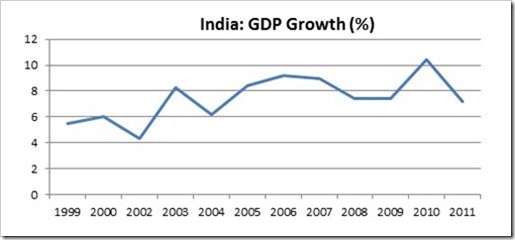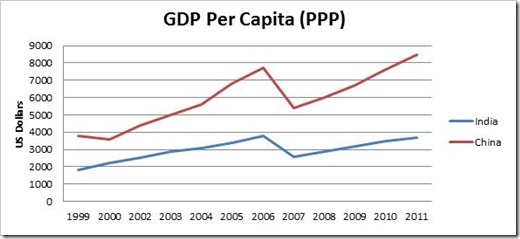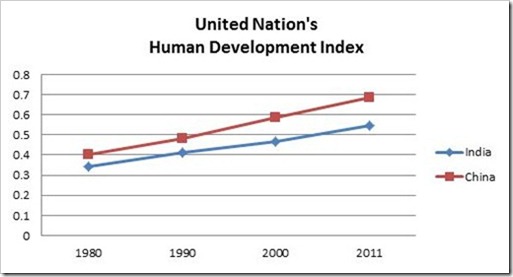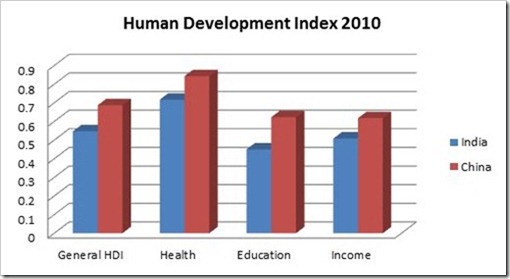Does economic growth reflect on the improvement of living standards for Indians?
The Indian economy is the tenth largest in the world by GDP. The country is one of the G-20 major economies and a member of the emerging BRICS countries (Brasil, Russia, India, China and South Africa). Compared to the Western economies, Indian GDP growth has been surprisingly high for the past years and it’s relevance in international trade and politics has risen year after year.
For example, in recent years, India has been claiming a permanent seat in the United Nations Security Council where currently only the United States, Russia, United Kingdom, France and China take part.
Source: indexmundi.com
After gaining independence from the British Empire in 1947, the Indian economy was Soviet inspired, with a large public sector for which the protectionism and central planning were the core of the economic policies. Steel, mining, machine tools, telecommunications, insurance, and power plants, etc were nationalized in mid 1950’s. But after 1970’s and especially with the collapse of the Soviet Union, the government at that moment initiated the liberalization of the economy.
Since 1991, when this process started, different governments have reduced tariffs and interest rates and ended many public monopolies, allowing automatic approval of foreign direct investment in many sectors.
Some institutions have predicted that India’s GDP, in current prices would overtake France and Italy by 2020, Germany, UK and Russia by 2025 and Japan by 2035, making it the third largest economy of the world, behind the US and China. India is often seen by most economists as a rising economic superpower and is believed to play a major role in the global economy in the 21st century.
But despite this astonishing increase in GDP (over 10% in 2010) there are many shadows in the future of the country. If we take into account the Purchasing Power Parity (economic technique used to determine the relative value of currencies and to compare them) when measuring the GDP, we see that India’s greatest rival in the area, China, is developing at a much faster pace (check the currency converter to check the exchange rate eur/usd).
Furthermore, according to the Gini Coefficient, which measures inequality in societies, India would be in the 69th position out of 160 countries. In this way, if we have a look at the evolution of the United Nation’s Human Development Index, we can see that the huge increase in GDP does not reflect on the improvement of living conditions of the Indian population.
The HDI represents a broader definition of well-being and provides a composite measure of three basic dimensions of human development: health, education and income. India’s HDI is 0.547, which gives the country a rank of 134 out of 187 countries with comparable data.
The HDI of South Asia as a region increased from 0.356 in 1980 to 0.548 today, placing India just below the regional average. In the meantime Chinese HDI has increased to 0.687. Just an example of the gap between the two countries: in 2005 there were 4.06 hospital beds for 1000 people in China, while there were 0.9 beds in India.
If the main objective of economic growth is to lead to improvements in the living standards of the majority of the population, a completely different socio-economic system should be put in place of the currently dominant one.
Sources: Wikipedia, United Nations Human Development Programme, Indexmundi.com
[About the Author: Aitor Laskurain is a PR and digital marketing specialist from Spain currently based in London. He is a freelance blogger and is very interested in emerging economies, social and environmental issues and entertainment industry]




